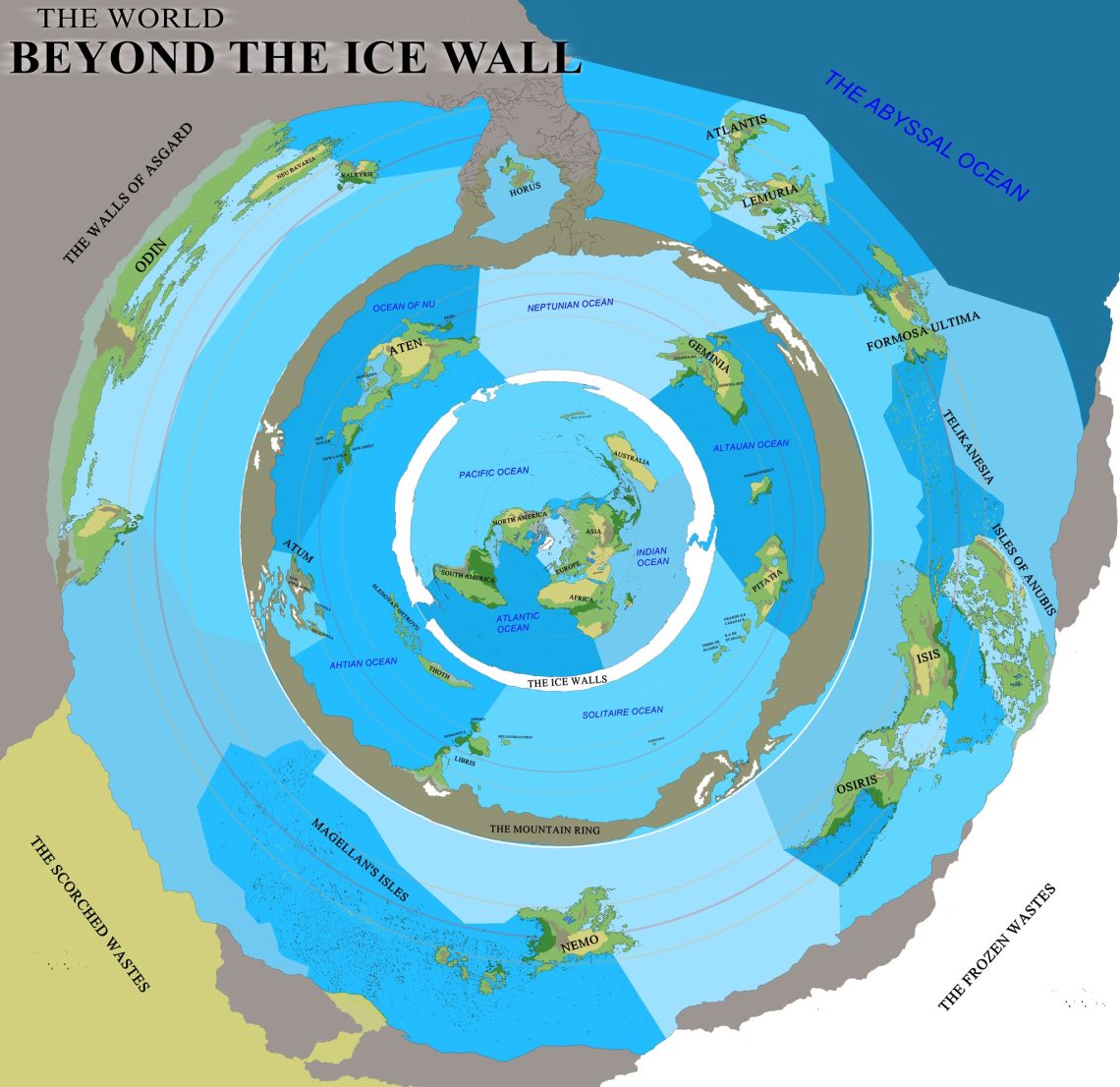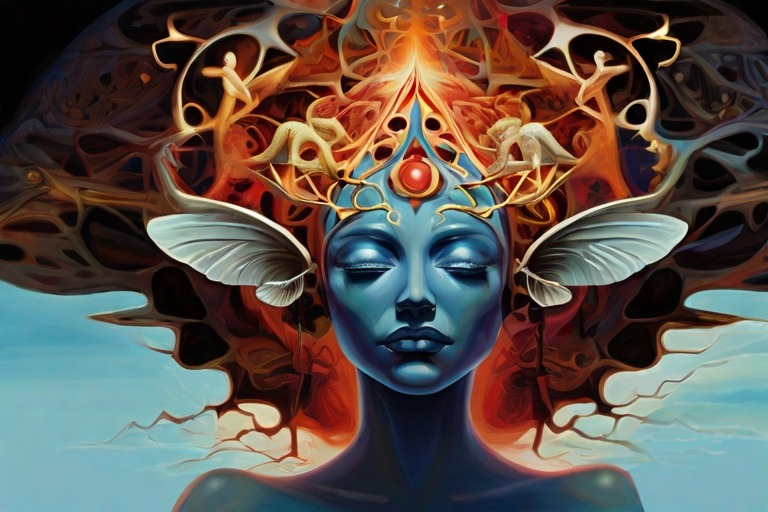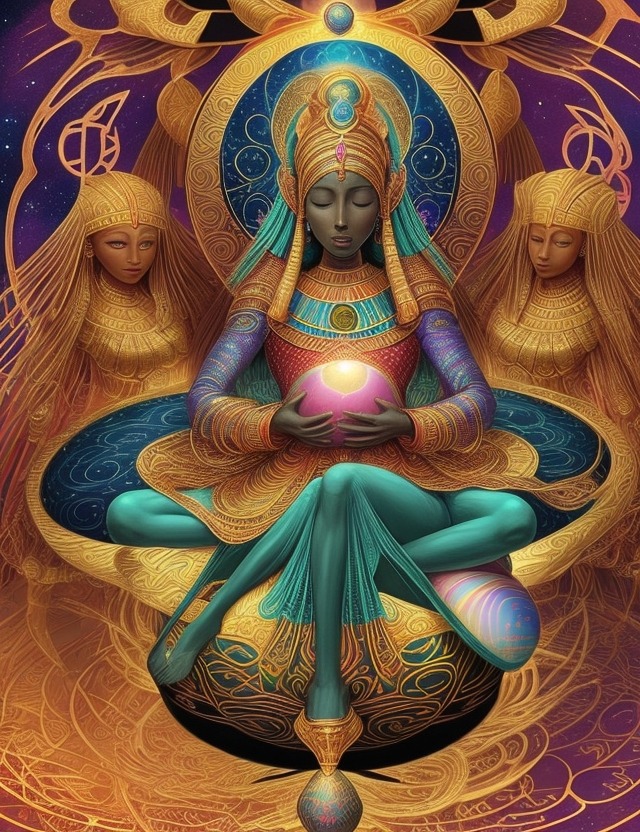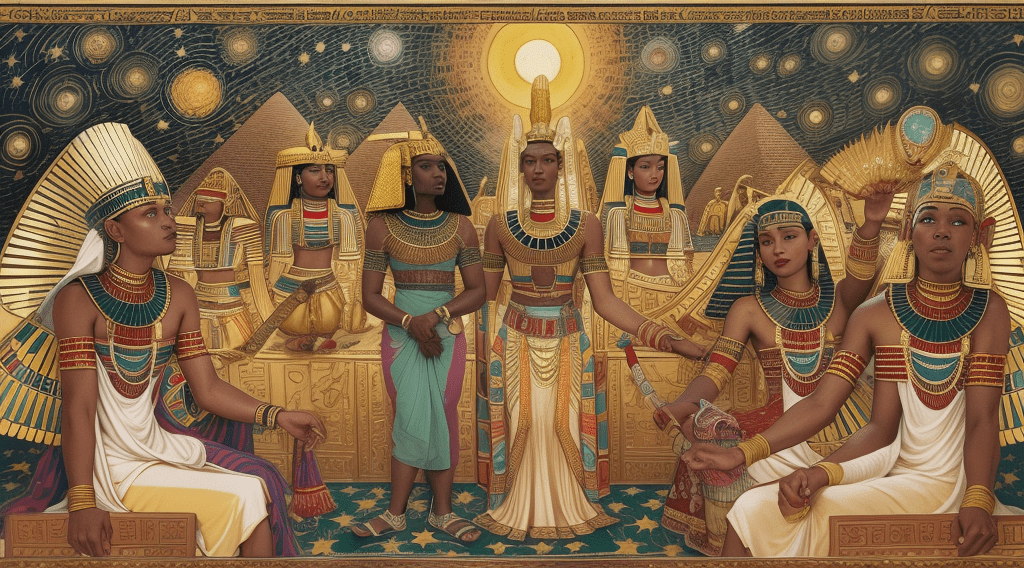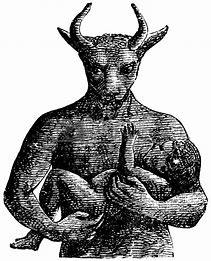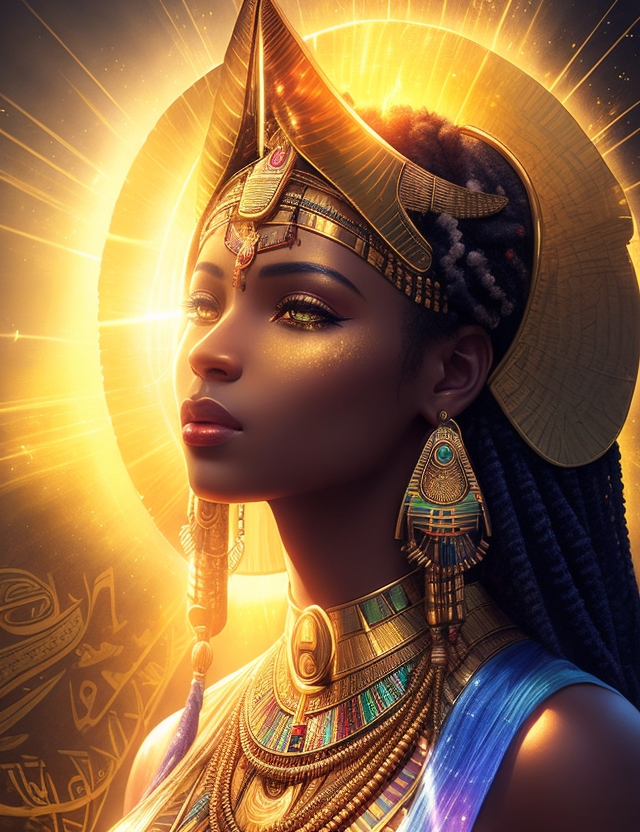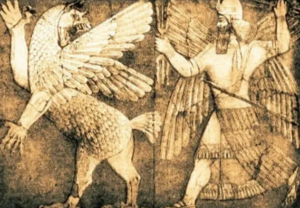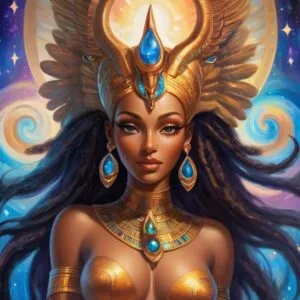Sci-Fi Meets Mythology
Exploring the Known World: A Journey Beyond the Ice Wall
The Known Worlds: Diverse Societies Across Hidden Lands Introduction In the year 1522 CE, the renowned explorer Ferdinand Magellan embarked on a daring mission under the orders of the Spanish crown. His objective? To become the first person to circumnavigate the globe. Thanks for reading Steafon’s Substack! Subscribe for free to receive new posts and support my work. Little did he know that his voyage would unravel mysteries that would forever alter the collective consciousness of mankind. One of the most significant discoveries made during Magellan’s journey was the existence of a massive ice wall known as the Parede. This enigmatic wall encircled the boundaries of the known world, challenging the existing models and theories of the time. As Magellan and his crew approached the wall, they witnessed extraordinary events that defied explanation. The Known World As Magellan’s vessels ventured closer to the Parede, the very fabric of nature seemed to respond. The oceans churned, the earth trembled, and the skies changed color. Sections of the ice wall cracked and plunged into the waters, creating larger openings that beckoned the crew, and indeed all of humanity, to explore further. This unprecedented encounter with the Parede had far-reaching consequences. The Black Moon Event, during which the moon turned an eerie black color, coincided with the discovery and widening of the gates in the ice wall. In the southern hemisphere, catastrophic tsunamis and indications of volcanic activity sent waves of fear through the world’s cultures. Interpretations of the Black Moon Event varied among different religious groups. Some holy men sought to calm the public, while others exploited the event to sow political instability and religious fervor. Ultimately, the European nobility reached a consensus that the event was a call to action for Christians to expand their horizons and explore the unknown territories beyond the ice wall. On the western islands, the geopolitical landscape in 1522 CE was marked by a complex web of competing Norgri kingdoms. These kingdoms had emerged from the collapse of the Andolont Empire, which had once united their territories. As former subject peoples broke away to form their own nations, the western islands became a fragmented and volatile region. Thoth: The Western Islands Thoth, the land beyond the ice wall, witnessed the arrival of the Yaghan relatives from the southern tip of South America around 6000 BCE. These intrepid humans became the first to sail beyond the ice wall, establishing a new home and gradually expanding their population across the western islands. In the 4th century BCE, a group of Carthaginian explorers, known as the Foshayti, were blown off course and found themselves forced through the Yaghan gate. They survived the treacherous journey and settled in Thoth, where they would coexist with the βae Noongeor people. Over time, the Foshayti would assert their dominance, absorbing, displacing, and even wiping out the local populations. The βae Noongeor, in response, either developed agricultural communities to compete with the Foshayti or remained pastoralists and hunter-gatherers in areas unsuitable for Foshayti agriculture. This clash of cultures shaped the social and political dynamics of Thoth’s western islands. States and countries See also: List of countries in Thoth in 1830 and List of sovereign states and dependent territories in Thoth International organizations See also: Thothian Council, Anti-Andolont Coalition, and Melᶄarthian Union Thoth Area11,573,261 km2 (4,468,461 sq mi)Population814,850,914Population density98.76/km2 (255.8/sq mi)DemonymThothianCountries42 (recognized)LanguagesList of languagesInternet TLDMezfflok Aten: The Continent of Duendes Aten, the continent off the coast of Atenic civilizations. The continent received its first human settlers nearly one million years ago when an Indonesian island was uplifted and floated to its current location. These settlers, known as Duendes, gave rise to four distinct races: Brownies, Goblins, Gnomes, and Leprechauns. The Duendes engaged in gradual settlement and adaptation, eventually introducing agriculture after their interactions with the Xenonesians around 800 BCE. The Xenonesians, primarily trading with the Gnomes and Goblins, brought technology and crops to Aten, influencing the continent’s civilizations. Aten’s diverse landscapes are inhabited by the Brownies in the central deserts and steppes, the Goblins in the dense jungles and rainforests, the Gnomes in the northern temperate regions, and the Leprechauns in the far eastern islands. Each race has its own unique culture, lifestyle, and relationship with the land. Thoth and Terra Infinitta: The World Beyond the Ice Walls <iframe width=”560″ height=”315″ src=” title=”YouTube video player” frameborder=”0″ allow=”accelerometer; autoplay; clipboard-write; encrypted-media; gyroscope; picture-in-picture; web-share” allowfullscreen></iframe> Xenonesia: A Civilization in Turmoil Xenonesia, a land of turmoil and conflict, saw the arrival of the Lapita culture and their settlement. Trade between the Duendeshobbits and the people of Dishipossu and Aten flourished. However, internal conflicts and a cycle of violence-plagued Xenonesian societies led to constant unrest. Piracy became a defining characteristic of the goblins, who inhabited the coastlines and carried out raids on neighboring territories. The Xenonesians struggled to find stability amidst these challenges, with their societies torn apart by internal divisions and external threats. Unknown Lands: Claudio Nicelli Claudio Nocelli is a renowned author who has captivated readers with his intriguing and thought-provoking books. One of his notable works is “The Lands of Mars: 178 Worlds Under the Great Dome“, a fascinating exploration of the mysterious planet Mars and its hidden secrets. This book takes readers on a thrilling journey through 178 different worlds within the vast Martian landscape. Another captivating book by Nocelli is “El Navegante Que Cruzó Las Murallas de Hielo: Mundos detrás de la Antártida” (translated as “The Navigator Who Crossed the Ice Walls: Worlds Beyond the Antarctica”). This book delves into the enigmatic region of Antarctica, unveiling the secrets that lie beyond its icy walls. Readers are taken on an extraordinary adventure as they discover new worlds hidden within the depths of Antarctica. One of Nocelli’s most popular works is “The Navigator Who Crossed the Ice Walls: Worlds Beyond the Antarctica”. This thrilling book has gained widespread acclaim for its gripping narrative and imaginative storytelling. It invites readers to explore the unexplored realms of Antarctica and encounter extraordinary worlds that exist beyond the boundaries of our known reality. Nocelli’s books have garnered significant attention
Genii, Daemons, Guardian Angels and Demonic Spirits: Depths of the Mind
The Ancient Concept of the Logos and Its Profound Influence on Mind and Spiritual Realities
Exploring Mythological Motifs: The Profound Symbolism of the Cosmic Egg
Overview The motif of the Cosmic Egg giving way to the birth of everything is evident in creation myths spanning various cultures, including Egyptian, Babylonian, Orphic, and Indian traditions, among others. Thanks for reading Steafon’s Substack! Subscribe for free to receive new posts and support my work. Thomas Burnet’s Sacred Theory of the Earth (1680–89) was a work that significantly influenced his cosmological views. According to Burnet, the earth was once a colossal egg, and he asserted this as a literal truth. In his narrative, the sun’s influence caused the waters of the deep to become volatile, resulting in the cracking of the egg and the subsequent rush of waters (the Deluge). The remnants of the shattered shell, according to Burnet, now compose the mountains and continents of our present world. In contrast, the consul’s cosmic egg appears perplexed, as the Quauhnahuac drains differ significantly from the life-renewing annual inundations of the Nile. The fascinating nature of the egg transcends mere existence, delving into the profound essence of primal origins. It didn’t emerge from a void; rather, it originated from something that predates nothingness. The egg is believed to trace its genesis back to a serpent, an ancient entity that predates even Ayin’s existence. This serpent, though not unfamiliar to researchers, seems to be an entity known from a prior existence. In the depth of a profound fall, A beckoning call resonates. Breaking through defenses, Revealing everything. As I rupture and unfold, I become. Truth. Many withhold from themselves the indisputable freedom, the genuine essence. Ignition… Man-made structures crumble, and internal landscapes return to the wild. An internal affair? Fertile soil is paying a heavy toll. Plant new seeds one by one. Amidst calming storms, Flowers bloom, hues return, The sky transforms anew, Painting itself blue. Multi-dimensional beings emerge from the sun. Satelloons glisten in the light. The divide between above and below blurs. It dissolves. Unless you await a Savior, Yet, why wait for yourself? Acknowledge your authentic self now. Definitions lose clarity, appear absurd, and fade away completely. Face-to-face With demons and devils, Dive headfirst into my scorching inferno, surrendering wholly to it. Upon awakening, I halt everything. The mind reveals, and the soul rekindles. A single moment is sufficient for a lifetime. A formless poem, a formless self. No one and nothing. Ever-changing yet eternally unaltered. A direct connection was established. I embrace myself. by Steafon Perry Description The cosmic egg possesses the extraordinary potential to give birth to a new metaverse, a process speculated to unfold over the expanse of millions to billions of years. Comprising the purest form of matter ever known, it can encapsulate the essence of God. One might entertain the notion that a being of God’s stature emerged from the Cosmic Egg. Rumors persist that with each annihilation of existence, the egg undergoes a cycle of reforming and hatching, bringing forth new beings and a renewed world. From Wikipedia: World Egg The world egg, cosmic egg or mundane egg is a mythological motif found in the creation myths of many cultures and civilizations. Typically, the world egg is a beginning of some sort, and the universe or some primordial being comes into existence by “hatching” from the egg, sometimes lain on the primordial waters of the Earth. History In The Genesis Absolute nothingness enveloped the cosmos—an infinite void devoid of form or substance. Suddenly, from this void, an egg materialized, originating from a serpent in the primordial world. It wouldn’t be unfounded to consider this being, or “egg,” as the supreme entity, if only for that fleeting moment. Subsequently, the egg hatched, giving rise to two formidable entities within the metaverse: Ouroboros, the embodiment of pre-existential endlessness and infinity, and Vitriol, the embodiment of pre-existential energy and hunger. This transformation turned the once non-existent plane into something tangible, with God and other creator deities fashioning more until the familiar universe we know today took shape. From nothingness emerged Infinity and Oblivion, completing the essential components for the creation of a universe. Myths and Legends The Cosmic Egg serves as a metaphor for potentiality, embodying the pre-creation chaos poised to evolve into the cosmos. This inherent duality sets the stage for conflicts found in world mythology—chaos and order, good and evil, light and dark, love and hate. Traditionally, a divine being resides within this cosmic egg, literally crafting itself from nothing (referred to as the ex-nihilo). This creator then shapes the material universe, utilizing either the substance within the cosmic eggshell or the chaos itself to bring order to the world. The intriguing question persists: what came first, the god or the egg? In some myths, the egg has a creator, often a woman, who brings the god into existence. The concept of a cosmic egg gained attention in the 1930s when science proposed that the universe originated from a gravitational singularity, expanding through a big bang to become the expansive universe we observe today. The cosmic egg is an ancient object that is older than humans’ myth can go, dating back to the beginning of time. Numerous tales about it can be found across the world, from Greece to China to Japan… All of them featured a cosmic egg in some way or another. — Carl Black. Exploring Mythological Motifs: The Profound Symbolism of the Cosmic Egg in Creation Narratives Diving into the rich tapestry of creation myths, a fascinating motif emerges—the birth of the Universe unfolding from a cosmic egg, a vessel harboring the very essence of creation, awaiting the nurturing warmth of incubation. The spectacle of cosmic hatching takes on myriad forms, all bound together by a common thread—the emergence of the egg from primordial waters, cradled tenderly by a bird or birdlike deity serving as the bridge between earthly and divine realms. In this sacred act of laying and nurturing the egg, the chthonic and the spiritual seamlessly intertwine, giving rise to the very fabric of existence. The World Egg, also known as the Cosmic Egg, encapsulates a
The Christ You Are: Eternal Truth through Scripture
Be the Christ You Are: Unveiling the Eternal Truth
Unveiling the Ancient Practices of Baal Worship
Unlocking the Secrets of Baal Worship
The Divine Wisdom of the Egyptian Goddess Isis
Introduction In ancient Egypt, the goddess Isis was revered for her divine wisdom, magical abilities, and healing powers. She embodied the essence of the divine feminine, representing empathy, compassion, and nurturing love. This article explores the significance of Isis in Egyptian mythology and how her teachings continue to empower women to connect with their inner wisdom and intuition. Who was the Goddess Isis? Isis, the sister and wife of Osiris, played a central role in Egyptian mythology. She mourned deeply when her brother was murdered by their sibling Set. Through her extraordinary magical abilities, Isis was able to resurrect Osiris and conceive their son Horus. She is often depicted as a symbol of motherhood, cradling the newborn sun god in her arms. Isis exemplified feminine strength, using her intelligence and perseverance to overcome immense challenges. The Divine Feminine Virtues Embodied by Isis Isis was revered in ancient Egypt as the wife, sister, and mother. She symbolized motherhood, magic, wisdom, and healing. Beyond her physical attributes, Isis possessed profound spiritual knowledge that was imparted through the Sacred Mysteries tradition. Her resilience in resurrecting Osiris after his murder by Set served as a powerful example of feminine strength and empowerment. Mastery of Nature and Cosmology Isis was not only a powerful magician but also a master of the subtle energies of nature and cosmology. She possessed the ability to heal and counsel those who sought her aid, offering remedies for physical, emotional, and spiritual afflictions. While practical magic was a part of her teachings, Isis focused on cultivating intuition by quieting the mind and listening within. She recognized the power of dreams and symbols to convey mystical wisdom. The Mysteries of Isis Isis taught dream incubation rituals and dream interpretation skills to her priestesses in the Mysteries. Through these practices, devotees could receive prophetic visions and celestial insights. Rituals involving meditation, chanting, song, and dance were performed in Isis’ temples to commune with transcendent realms and connect with the Goddess herself. The Mysteries of Isis were esoteric spiritual rituals and teachings associated with specific gods and goddesses in ancient Egypt, Greece, and Rome. Relevance of Isis’s Wisdom in Modern Times In today’s fast-paced world, it is easy to lose touch with our inner knowing. However, cultivating intuition, empathy, and spiritual connection is crucial for leading fulfilling lives. Isis’s teachings serve as a reminder of the importance of embracing feminine virtues, which can foster personal empowerment and service to others. Her example of using adversity to cultivate compassion inspires resilience. By turning within through meditation, dreams, and divination, we can reawaken dormant gifts and nourish our souls. The Empowerment of the Sacred Mysteries The Sacred Mysteries associated with Isis involved initiation rituals and teachings that aimed to provide direct revelation, empowerment, and salvation. Central to these mysteries was the symbolism of Isis resurrecting Osiris after his murder. Initiates underwent ritual death and rebirth experiences to commune with the divine and unlock their spiritual potential. The Mysteries involved purifications, fasting, symbolic enactments of myths, and levels of initiation over many years. The Role of Isis’s Temples and Priestesses Isis’s temples, particularly those at Philae and Saïs in Egypt, served as prominent Mystery centers. Within these sacred precincts, female priests guided devotees through transformative rites and disciplines associated with the Mysteries. They imparted Isis’s knowledge of sacred symbols, dreams, magical arts, and intuition through meditation, ascetic practices, and ritual drama. The Sacred Mystery teachings focused on cultivating virtues such as compassion, courage, wisdom, and service. Seeking Salvation and Empowerment Devotees who undertook the Mysteries of Isis aspired to attain salvation and unity with the gods, mirroring Isis’s relationship with Osiris in life and after death. The sacred rites aimed to enlighten participants and empower them to alleviate suffering, just as Isis brought comfort and restored health to countless individuals. The Mysteries represented a tradition of spiritual and social empowerment through the wisdom of the divine feminine. Conclusion The Egyptian goddess Isis embodied divine wisdom, magic, and healing. Her teachings continue to inspire seekers to activate their intuition, overcome obstacles, and realize their higher potential through service. Reconnecting with goddesses like Isis can help restore balance in a world facing complex challenges. Her nurturing love and guidance serve as touchstones for the restoration of the soul and society. FAQ 1. What were the main attributes of the goddess Isis? Isis was revered for her divine wisdom, magical abilities, and healing powers. She embodied the divine feminine virtues of empathy, compassion, and nurturing love. 2. What were the Sacred Mysteries associated with Isis? When we talk about the mysteries of this or that, we usually mean something essential yet a little obscure, unknown, or badly understood: the mysteries of the universe’s genesis, the mysteries of life, the mysteries of the human psyche. However, the Sacred Mysteries of Isis are imperfect and sometimes hazy, and much remains unknown. The ancients themselves had something very precise in mind when they spoke about the Sacred Mysteries. How Isis Brought Her True Love Back From the Dead Season 1 Episode 3 Resources: Worship of this Egyptian goddess spread from Egypt to England https://www.nationalgeographic.co.uk/history-and-civilisation/2020/03/worship-of-this-egyptian-goddess-spread-from-egypt-to-england Isis | The Goddess of Fertility https://www.ancient-egypt-online.com/isis.html How Isis Brought Her True Love Back From the Dead https://www.pbs.org/video/how-isis-brought-her-true-love-back-from-the-dead-mex06g/
Genesis 1 and Babylonian Mythology: Bible vs Babel Connections
Genesis 1 and Babylonian Mythology: Unraveling the Connections The Genesis creation account has long fascinated scholars and laypeople alike, with its majestic vision of God bringing order from primal chaos in six days of creative work. Yet this biblical text has also been the subject of intense debate, as certain scholars assert that Genesis 1 borrows extensively from the mythology of ancient Babylon. In this article, I will critically examine the evidence for these alleged literary connections by analyzing the pertinent biblical and Babylonian texts. Our goal is to gain a deeper, more nuanced understanding of the relationship between Genesis 1 and Babylonian myths like the Enuma Elish through a balanced evaluation of similarities and differences. What emerges is a complex picture that challenges simplistic notions of direct borrowing. While superficial parallels can be found, closer scrutiny reveals fundamental theological divergences that call into question claims of dependence. By unveiling the multi-faceted nature of these ancient literary traditions, we can arrive at well-reasoned conclusions about Genesis and its unique vision among the cosmological myths of the ancient Near East. Exploring the Babylonian Context Before comparing Genesis 1 to Babylonian myths, we must first understand the context and nature of these non-biblical sources. One of the most significant Mesopotamian texts for our study is the Enuma Elish, an Akkadian epic named after its opening line, “When on high.” Spanning seven tablets, this epic narrates a cosmogonic myth centered around the rise of the god Marduk and his establishment of cosmic and political order through defeating the goddess Tiamat and her monsters in battle. The Enuma Elish served an important religious function in Babylon as the basis for the city’s New Year’s festival, the Akitu. During this 12-day festival, priests would ceremonially enact the myth’s drama to renew Marduk’s kingship and affirm Babylon’s status as the highest deity’s sacred city. As a product of Babylonian scribal schools meant to reinforce theology and ideology, the text emphasized Marduk’s supremacy over other gods like Anu and Ea through his creative acts. Beyond the Enuma Elish, Mesopotamian scholarship has uncovered numerous fragments of cosmological myths among tablets from places like Nippur and Uruk, indicating a diversity of creation traditions existed across ancient Mesopotamia. While some scholars assert Genesis borrowed from a single source like the Enuma Elish, the evidence suggests Genesis may have interacted with or adapted elements from a wider body of Mesopotamian myths. With this context in mind, we can now examine Genesis 1 in light of Babylonian mythology to analyze purported connections and divergences between the two traditions. Marduk and Zeus have a number of features in common, especially as Zeus emerges as lord of the cosmos. Kronos is very much a Qingu-like figure, especially in his battles with Ouranos, and as he emerges as lord of the cosmos. Likewise, there are parallels between Ti’amat of Enuma Elish and Gaia, who stirs up her children—the Titans—against their father. Enuma Elish (abbrv) Tablet I 1. When in the height heaven was not named, 2. And the earth beneath did not yet bear a name, 3. And the primeval Apsû, who begat them, 4. And chaos, Tiamat, the mother of them both,– 5. Their waters were mingled together, 6. And no field was formed, no marsh was to be seen; 7. When of the gods none had been called into being, 8. And none bore a name, and no destinies [were ordained]; 9. Then were created the gods in the midst of [heaven] (All gods, monsters, and other characters are celestial orbs, sometimes known as planets, dwarf planets, and moons. Tiamat was the largest planet, although Apsu, her counterpart, could still compete with the younger gods (planets). Their “waters mingling” might refer to a collision, the seeding of life on the other, or the drawing of more things into their orbit.”) Tablets II – III To recapitulate, these tablets detail the rising conflict between the gods and their progeny, as well as the arrival of the Supreme God, Marduk. (The arrival or birth of these additional planetary bodies (Gods) from Tablet I results in several planets surrounding Tiamat and Apsu, most likely hurling debris at them and appearing to be a nuisance. Then a rogue planet known as Marduk enters the newly formed Solar System.) Tablet IV 9. “Established shall be the word of thy mouth, irresistible shall be thy command; 10. “None among the gods shall transgress thy boundary. 11. “Abundance, the desire of the shrines of the gods, 12. “Shall be established in thy sanctuary, even though they lack (offerings). 13. “O Marduk, thou art our avenger! 14. “We give thee sovereignty over the whole world. 30. They give him an invincible weapon, which overwhelmeth the foe. 31. “Go, and cut off the life of Tiamat, 34. They caused him to set out on a path of prosperity and success. 47. He sent forth the winds which he had created, the seven of them; 93. Then advanced Tiamat and Marduk, the counsellor of the gods; 94. To the fight they came on, to the battle they drew nigh. 100. And her courage was taken from her, and her mouth she opened wide. 103. He overcame her and cut off her life; Tablet V 1. He.(i.e. Marduk) made the stations for the great gods; 2. The stars, their images, as the stars of the Zodiac, he fixed. 3. He ordained the year and into sections he divided it; 4. For the twelve months he fixed three stars. 5. After he had […] the days of the year […] images, 6. He founded the station of Nibir to determine their bounds; 7. That none might err or go astray, 8. He set the station of Bêl and Ea along with him. 9. He opened great gates on both sides 10. He made strong the bolt on the left and on the right. 11. In the midst thereof he fixed the zenith; 12. The Moon-god he caused to shine forth, the night he entrusted to him.
Exploring the Intriguing Links Between Rh-Negative Blood and Extraordinary Phenomena
Abstract Rh-negative blood remains an enigma among genetic lineages. While comprising only 15% of the global population, those with Rh-negative blood present with certain unique physiological and behavioral traits. This article aims to comprehensively examine available research exploring the profound connections between Rh-negative genetics and reported experiences involving extra-terrestrial contact or heightened anomalous abilities. By synthesizing scientific evidence with anecdotal accounts, we endeavor to gain a broader perspective on humanity’s origins and capacities. Understanding Rh-Negative Blood The abrupt emergence of the Rh negative lineage roughly 45,000 years ago stands as one of humanity’s great evolutionary mysteries. What dramatic cosmic events may have precipitated this genetic divergence in our ancient past? Some theorists have speculated that contacts with intelligent visitors from the stars may have introduced novel DNA alterations into our bloodlines. While the precise causes remain unclear, the very singularity of this lineage’s emergence hints at forces beyond what science has yet explained. Just as the stars themselves whisper secrets of creation, could some long-ago astronomical occurrence—a supernova’s flare amid the night or a comet’s fall to earth—have seeded our nascent ancestry with novel code, shaping what was to come across the ages? What truths from dawn lie buried in our blood, waiting to be remembered? The Genetic Anomaly Rh-negative blood differs significantly from the predominant Rh-positive phenotype. Rh-negative individuals lack the 44-gene immunogenic Rh blood group system present in 85% of humans. The emergence of this distinct lineage roughly 45,000 years ago without recorded predecessors presents an evolutionary enigma requiring further elucidation. The abrupt emergence of the Rh negative lineage roughly 45,000 years ago stands as one of humanity’s great evolutionary mysteries. What dramatic cosmic events may have precipitated this genetic divergence in our ancient past? Some theorists have speculated that contacts with intelligent visitors from the stars may have introduced novel DNA alterations into our bloodlines. While the precise causes remain unclear, the very singularity of this lineage’s emergence hints at forces beyond what science has yet explained. Just as the stars themselves whisper secrets of creation, could some long-ago astronomical occurrence—a supernova’s flare amid the night or a comet’s fall to earth—have seeded our nascent ancestry with novel code, shaping what was to come across the ages? What truths from dawn lie buried in our blood, waiting to be remembered Correlative Traits While not universally exhibited, common self-reported attributes of Rh-negatives include higher intelligence, sensitivity to heat or sunlight, psi talents, and distinctive physical features such as red or blonde hair with green or blue eyes. Surveys indicate Rh-negatives show disproportionate prevalence in European populations, particularly among Basque people of Spain and France. Their isolated language and high Rh-negative frequency of over 50% further shroud their ethnic origins. Nephilim and Anunnaki Another, more ethereal, hypothesis holds that the biblical Nephilim are responsible for Rh-negative blood types. In the Book of Enoch, the Nephilim, also known as the Watchers, descend from heaven to marry with mankind, resulting in a human-angel hybrid. This group of angels and their descendants were wiped out in the great biblical flood, however some were supposed to have survived, preserving the Rh-negative blood line. Another strange hypothesis holds that the Anunnaki, an extraterrestrial race that helped form ancient Mesopotamian civilizations, engineered or crossbred with humans, and that some of this resulted in the Rh-negative blood type. People with Rh-negative blood are said to have unique physical characteristics as well as a predisposition for psychic phenomena and extraterrestrial contacts. Some of the features include: Higher than average IQ. Lower body temperature. High blood pressure Red or reddish hair. Extra vertebrae Sensitive vision, especially sensitivity to sunshine. Enhanced intuition Could there be any truth to this, or is it an elitist notion that a small percentage of the population possesses advanced extraterrestrial genetics? While there is little evidence to support these purported features, some have referred to occurrences of red-haired kings in ancient civilizations around the world as a possible connection. For example, in South America, some of the oddly shaped, oblong Paracas skulls were discovered to have red hair in a region where that hair color is not endemic. The gene that causes red hair originated in the Middle East and Europe. Breakaway archaeologists, including L.A. Marzulli, have linked these red-haired skulls to the Nephilim. Could Rh-negative blood type be another common factor? Exploring Associations with Anomalous Experiences There are also qualitative insights to be found in experiencers’ first-hand accounts. One recalled, ‘The large-headed beings conveyed feelings of profound compassion and curiosity about humanity’s development through images and sensations more than words.’ Honoring such wisdom may provide glimpses beyond what science has proven. Links to Reported Extraterrestrial Contact Several quantitative studies lend credence to the proposed correlation between Rh-negative blood and events involving purported extraterrestrial contact. The 1989 Commonwealth of Virginia Abduction Study interviewed 202 individuals, finding over 35% reported being Rh-negative despite this type only occurring in 15% of the general population. (1) Similarly, in the International Center for Abduction Research database of over 1,400 cases, Rh-negative proportions reached as high as 54% in some samples, far exceeding expected occurrences. (2) Commonalities also emerge from abductee accounts. Recurring descriptions of large-headed, large-eyed visiting beings closely resemble the physical traits of those with Rh-negative blood. (3) Research further suggests these entities may transmit telepathic communications, a capability Rh-negatives are theorized to be more receptive to based on brain structure deviations. (4) While contact motives remain enigmatic, some propose acquiring genetic samples for monitoring human evolution per alleged ancient astronaut theories of human-extraterrestrial hybridization programs. There are also qualitative insights to be found in experiencers’ first-hand accounts. One recalled ‘The large-headed beings conveyed feelings of profound compassion and curiosity about humanity’s development through images and sensations more than words.’ Honoring such wisdom may provide glimpses beyond what science has proven. Whether in dream or flesh, she could not say, but the message seemed clear: our fate and the stars are entwined in ways modern science has yet to grasp. Potential for Paranormal or PSI Abilities
The Passionate Goddess Isis: Beloved Protector of Egypt
A Magical Deity With Healing Powers In the pantheon of ancient Egyptian gods and goddesses, Isis held a special place as a magical deity with extraordinary healing powers. Renowned for her ability to use words of power and ancient incantations, Isis possessed a profound understanding of the mystical arts. Her magical prowess was not limited to performing extraordinary feats but also extended to the realm of healing. The stories of her healing abilities are numerous and remarkable, with one particularly notable instance being her intervention to save her son, Horus, from a venomous scorpion sting. It is said that she employed her profound knowledge of herbal remedies and incantations to restore him to health. Through her compassion and gift of healing, Isis became a figure of adoration, inspiring deep love and devotion from the Egyptian people. A Loving Mother and Wife At the heart of Isis’s character lies her unwavering devotion and boundless love as a mother and wife. In countless depictions, Isis is portrayed cradling her infant son, Horus, in her arms, radiating maternal warmth and protection. Her love for her family knows no bounds, and her nurturing nature shines through in her role as a mother. Furthermore, Isis’s devotion extends beyond her immediate family to her beloved husband, Osiris. In the face of tragedy, her loyalty and determination to resurrect Osiris after his murder by his jealous brother, Set, serve as a testament to her unwavering love. Her relentless pursuit and magical abilities ultimately led to Osiris’s resurrection, inspiring awe and reverence among the ancient Egyptians. A Force of Fertility and Nature Isis’s influence extends far beyond her role as a mother and wife. In ancient Egyptian mythology, she is revered as a goddess of fertility, symbolizing the eternal cycle of life and the bountiful forces of nature. The fertile lands of Egypt owe much of their prosperity to Isis, who was believed to have the power to control the flooding of the Nile River. As the lifeblood of the nation, the Nile’s annual inundation brought fertility and abundance to the land, ensuring plentiful harvests. Isis’s association with the river and her ability to manipulate its waters bestow upon her the title of “Lady of the Nile.” Her nurturing nature and connection to the cycles of nature made her a beloved figure, celebrated as the bringer of life and prosperity. A Guiding Light in the Afterlife Isis’s significance extends beyond the mortal realm, as she played a crucial role in ancient Egyptian beliefs concerning the afterlife. As a benevolent and compassionate goddess, Isis guided the souls of the departed through the treacherous journey to the underworld. It was believed that she welcomed the deceased, introducing them to the gods of the afterlife and ensuring their safe passage and eternal rest. Her ability to resurrect her husband, Osiris, also linked her to the concepts of rebirth and renewal. Isis offered solace and guidance to the souls, providing hope and motherly comfort even in the face of death. Her presence in funerary rituals and her role as a guiding light in the afterlife cemented her status as a beloved protector of the departed. A Passionate Protagonist in Myth The tale of Isis and Osiris stands as one of the most captivating and enduring myths in ancient Egyptian mythology. It is a narrative that showcases the depths of Isis’s passion, intelligence, and unwavering determination. The story recounts the tragic murder of Osiris by his jealous brother Set, who dismembers his body and scatters the pieces throughout Egypt. In her grief, Isis embarks on a relentless quest to retrieve and reassemble her beloved husband’s remains. Through her immense magical powers and unwavering love, Isis triumphs over adversity, restoring Osiris to life, albeit in the realm of the dead. The story of Isis and Osiris serves as a poignant reminder that even in the face of unimaginable loss, love and devotion have the power to conquer despair and even death itself. It is a narrative that has inspired generations, invoking devotion and providing solace to those who have experienced profound loss. Beloved Protector of Egypt for Millennia Isis’s enduring legacy as the beloved protector of Egypt spans millennia. Her worship and reverence were not confined to a single era or dynasty. From pre-dynastic times to the height of ancient Egypt’s power and beyond, her name and influence resonated throughout the Nile Valley and the shores of the Mediterranean. Temples dedicated to Isis were centers of religious life, drawing devotees seeking her guidance, protection, and blessings. Even after the decline of the ancient Egyptian civilization, Isis’s name continued to be honored and revered, transcending time and borders. Her legacy as a goddess who watches over her people with a mother’s devoted care has solidified her immortal status among the gods of Egypt. In conclusion, the passionate Goddess Isis captivated the hearts and minds of the ancient Egyptians through her magical abilities, unwavering love as a mother and wife, and her connections to fertility and the cycles of nature. Her role as a guiding light in the afterlife provided solace and comfort to the departed, while her story of triumph over grief and adversity inspired devotion for generations. Isis’s legacy as the beloved protector of Egypt endures, ensuring her immortality in the annals of history and the hearts of those who still admire her today. Resources: Gardiner 1913; Steindorff and Wolf 1936, 47, fig. 11; David 2007, 186. Paris, Musée du Louvre, Département des Antiquités égyptiennes, N 3068, https://collections.louvre.fr/en/ark:/53355/cl010003125; D’Auria, Lacovara, and Roehrig 1992, 44. University of Manchester, Manchester Museum, 5886, http://harbour.man.ac.uk/mmcustom/Display.php?irn=100351.php. I would like to thank Campbell Price, curator of Egypt and Sudan, Manchester Museum, University of Manchester, for the generously granted rights of use. ︎ Kucharek 2005, 342–58. De Buck 1935, CT 50 = I.228b–c; see Assmann 2002, 279. Is this to be understood as the time for the final rites at the tomb shaft? On the connection between the course of the sun and the fate of the dead, which is

